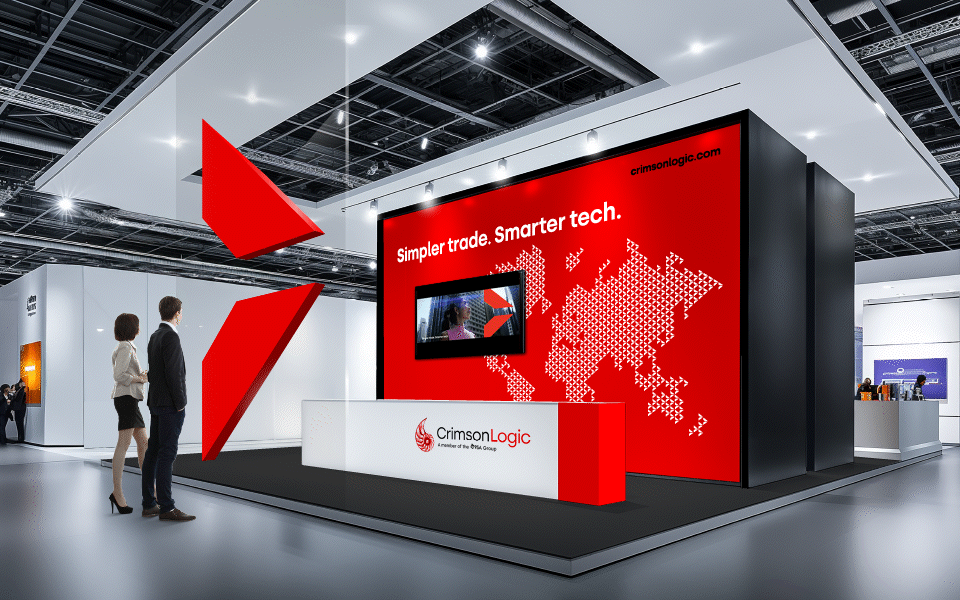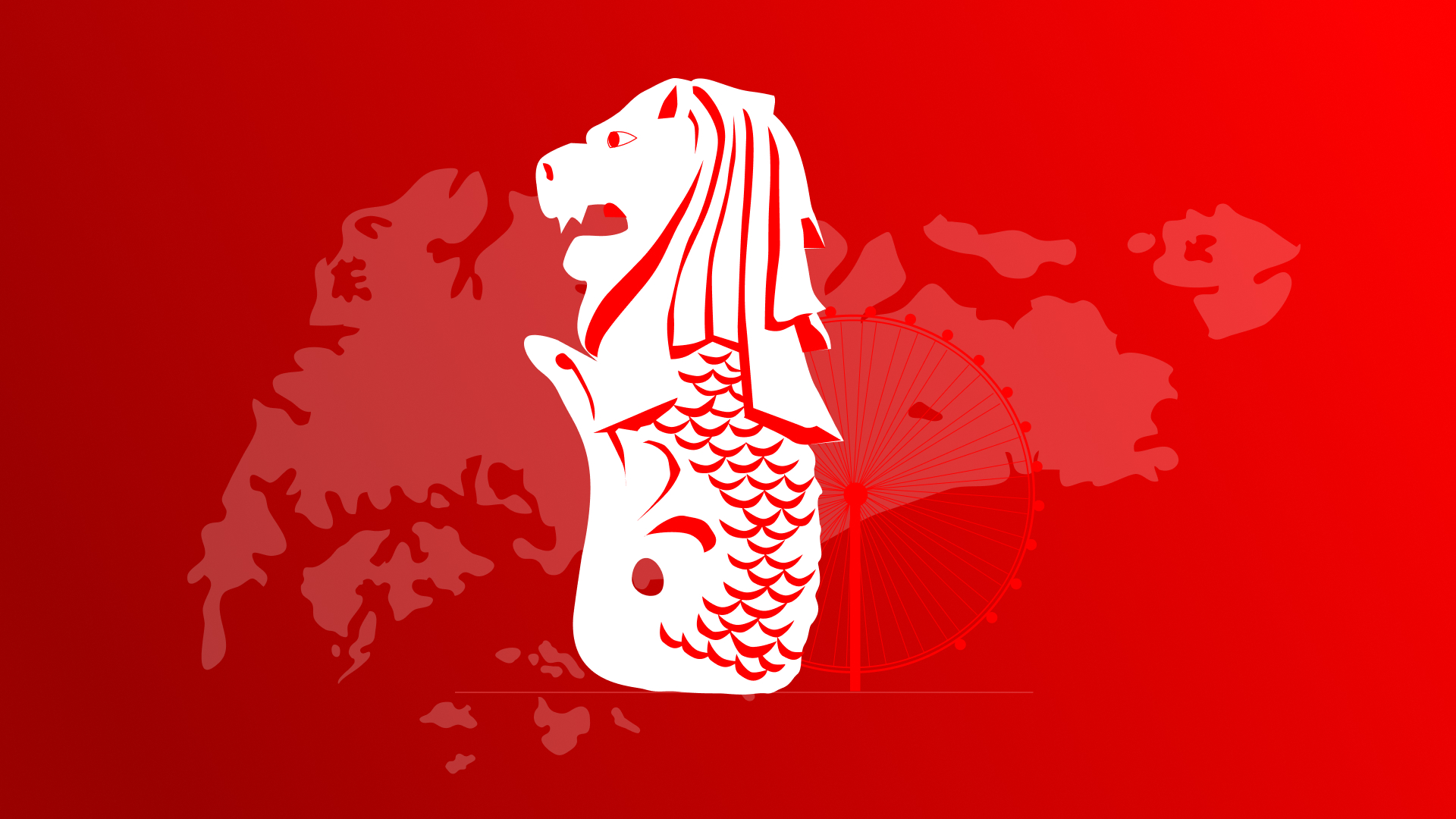Strategic Branding for Tech Companies in a Crowded Market
Your tech brand deserves more than visibility—it needs clarity, trust, and traction. Learn how to build strategic identities that cut through the noise.

Your tech brand deserves more than visibility—it needs clarity, trust, and traction. Learn how to build strategic identities that cut through the noise.


Singapore’s tech sector is bursting with ambition. According to the IMDA’s Singapore Digital Economy Report 2025, the nation’s digital economy contributed S$128.1 billion in value-added output, equivalent to 18.6% of GDP. The ecosystem is thriving. But that very growth has made things noisier, more crowded, and harder to stand out in than ever before.
Start-ups pitch disruption before breakfast. Enterprise platforms reinvent themselves every quarter. Everyone promises innovation, agility, transformation, yet somehow, every website, pitch deck, and tagline feels eerily familiar.
You might know the feeling.
Your product performs brilliantly. Your engineering team is world-class. Your investors believe in your potential. But when prospects compare you with competitors, the question still lingers: “Why you?”
You refine your message, tweak your visuals, even relaunch your site. Yet the response stays the same—polite interest, but not conviction.
That is not a product problem. That is a brand problem.
As Ashley Friedlein, CEO & Founder of Guild, puts it: “Your brand is the single most important investment you can make in your business.”
And that belief starts with brand strategy—the discipline that aligns how your technology is built, seen, and remembered. In this guide, we explore why tech companies need branding, how to build it right, and which agencies in Southeast Asia are leading the way.
Quick overview:
You may believe that your technology is the hero of the story. After all, you’ve built the architecture, nailed the functionality, and set the roadmap. But imagine this: the hero shows up in armour and sword — yet the audience still asks, “Who is this again?”
That’s what happens when branding is left out of the equation.
Jeff Bezos put it simply:
“A brand for a company is like a reputation for a person. You earn reputation by trying to do hard things well.”
Amazon’s story is proof that strategic branding compounds. Amazon’s brand value reached S$3.541 trillion in November 2025, making it the fifth most valuable company in the world.
This growth is not driven solely by retail. It stems from a consistent brand narrative centered on customer obsession, trust, and innovation across every business line, from AWS to Prime.
The lesson for tech companies is clear: when your brand stays coherent even as your offerings expand, it becomes a platform for scale and not just a name on your product.
If your product is superior but your brand story is confused or generic, you are leaving leverage on the table.
The strategic advantages you unlock with brand strategy are:
When you bring all of this together, branding stops being a marketing function and becomes a leadership tool.
At Vantage Branding, this is what we do best: helping technology companies stand out with focus, coherence, and conviction. Book a 30-minute brand strategy workshop with us and discover how insight-led branding can help you scale faster and smarter.
Suggested Read: Unveiling the Secret: Why Branding Matters to Businesses
Every tech is constantly changing with new features, expanded markets, and shifting user expectations. However, often the brand that should represent them remains static. It lags. It reflects yesterday’s positioning, yesterday’s offer, yesterday’s promise.
A true brand strategy isn’t an identity refresh. It’s a living framework that moves with you. It aligns your vision, your product, and your market presence so your brand stays current, credible, and competitive.
These steps help in developing a solid brand strategy:
Discovery is the first step. It is the phase in which you uncover the real drivers of your brand — the truths that matter, the differentiators that persist, and the audience perceptions that count.
It is done so you stop being just another tech business and become a brand people understand and believe in.
What you need to achieve this:
This step matters because when you skip discovery, you build from assumptions. Without insight, you risk a brand that looks polished but lacks belief, depth, and staying power.
The team at Vantage Branding goes far beyond visuals. We start with the hard questions—what your company stands for, how your technology creates value, and why your audience should care. Through stakeholder interviews, brand workshops, and customer-journey mapping, we uncover the truths that drive conviction.
Then we build the system: naming that signals purpose, positioning that earns trust, architecture that scales with growth, and tone of voice that speaks with confidence. Every element is designed to move with your technology and not just match it.
Gain insights into your current branding. Take our quiz to understand what’s holding your tech brand back. Start the quiz.
Messaging and identity alignment are where your strategy becomes tangible. They ensure that what you communicate externally and what your teams believe internally feel like one story.
For technology companies, this alignment is crucial. Your audience is intelligent, analytical, and selective. A consistent voice, a well-structured narrative, and an identity system that scales with your growth help translate technical innovation into something that feels human and trustworthy.
These steps will help you achieve alignment:
Intel demonstrates this principle well.
Rather than trying to speak to everyone at once, Intel created the Developer Zone on its homepage. This is a dedicated space for one of its most important audience groups.
The Developer Zone is a brand experience built around a single segment’s needs, tone, and priorities. Every element, from content structure to vocabulary, reinforces Intel’s core promise of empowering innovation through technology.
Pro Tip: Great brands do not dilute; they focus. Start by identifying the one audience that drives the most strategic value, whether it’s developers, enterprise buyers, or investors. Build your messaging around their world. Transparency for one audience creates credibility with all.
Your next step is to embed your brand into every process, product, and person who represents it. This phase is about building systems that keep your brand as adaptive as your technology.
Implementation goes beyond a launch. It’s about alignment, consistency, and continuous learning. You need to make sure that as your organisation scales, your brand scales with it.
This requires planning, governance, and measurement so that your brand doesn’t drift every time the roadmap changes.
Steps to achieve this:
Spotify is a masterclass in controlled adaptation. The brand’s growth over the years has been consistent in tone and adaptable in form. It's changed just enough to stay relevant but never so much that you lose recognition.
Spotify's design system, colour language, and copywriting style improve with its audience. However, it consistently maintains its essence by remaining accessible, playful, and community-driven.
Treat your brand as software — version it, document it, and iterate on it. Continuous, deliberate improvements build stronger reputations than reactive reinventions. But know when iteration isn’t enough. When your business pivots, your markets shift, or your reputation outgrows your identity, incremental change can hold you back.
The hard part is timing. Market signals rarely arrive as clear directives. They show up as longer sales cycles, missed opportunities, or quiet disengagement. The challenge is sensing that shift early enough to act with intent—not panic.
That’s why strategic brand management matters. It helps you read the room before the room moves on. CrimsonLogic shows what this looks like in practice.
As a Singapore-based digital solutions provider operating in over 40 countries, CrimsonLogic needed more than a visual refresh. It needed a strategic rebranding.
Its legacy brand reflected reliability and government partnership, but not the innovation and global reach it had earned. Through stakeholder interviews, workshops, and market research, Vantage Branding helped redefine its narrative around innovation, collaboration, and trust.
The result: a unified identity and communication system that aligned internal culture with external reputation. CrimsonLogic developed a stronger credibility across Asia, the Middle East, and Africa. The brand feels modern, globally coherent, and unmistakably Singaporean in its precision and integrity.
Read the Full Story Here: CrimsonLogic Case Study
New funding, new markets, or new technology can mean your brand must adapt before the organisation even finishes changing. In times of change, every decision shapes perception. Whether you are scaling, pivoting, or rebuilding, a few sharp brand moves can turn change into progress.
This is what forward-looking tech companies do differently:
The smartest move of all, though, is choosing the right partner.
In a rapidly advancing tech industry, several branding agencies have successfully struck a balance between strategy, design, and business growth. They understand how to translate complexity into measurable impact. These leaders are listed in the next section.
Suggested Read: 8 Game-Changing Branding Strategies for Singapore B2Bs To Go Global
The best agencies start with discovery. They ask hard questions, translate insights into strategy, and then build creative systems that actually drive commercial results. Choosing the right branding partner should not stop at the slickest portfolio.
If you are evaluating partners, look for three things:
These three agencies consistently get it right:
Vantage Branding is a leading brand consultancy for technology companies that want to move from innovation to influence. What sets Vantage apart is its ability to combine deep strategic rigour with creative precision. The company tech firms articulate what they stand for in language, design, and experience that audiences actually believe.
Vantage’s process begins with research, which involves conducting interviews with leadership teams, customers, and employees to uncover the brand’s authentic strengths.
From there, they develop insight-led brand strategies that align purpose, positioning, and performance.
This approach has powered reforms for regional leaders such as Epson, Singapore Symphony Orchestra, ThoughtFull, and Allium Healthcare.
Key Capabilities:
Vantage Branding also provides measurable implementation support by helping brands roll out strategies through design governance, team training, and ongoing consultation.
The firm is certified under the Practising Management Consultant (PMC) scheme. It works closely with businesses eligible for the Enterprise Development Grant (EDG), through which companies can receive up to 50% support for qualifying brand projects.
Best For: Mid-to-large technology companies, B2B enterprises, and innovation-driven organisations looking to align strategy, design, and growth.
Creativeans is a multidisciplinary brand innovation consultancy known for blending creativity with strategic thinking. Their approach emphasises simplicity and storytelling — helping businesses communicate complex ideas with elegance and impact.
They focus intensely on sustainability-driven branding and have worked with government agencies, SMEs, and startups across Singapore and Europe. The firm’s proprietary methodology, “BrandBuilder,” combines brand strategy, design, and innovation consulting under one framework.
Key Capabilities:
Best For: Purpose-led or design-conscious tech firms seeking to connect brand purpose with creative distinction.
Tangible Asia approaches branding as a business management tool. Their strength lies in helping leadership teams use brand strategy to drive organisational change and not just communication alignment.
They are especially skilled in employer branding and brand architecture, making them a go-to partner for corporates managing multiple sub-brands or entities. Tangible’s balanced mix of consulting and creative skills helps translate strategy into execution with operational simplicity.
Key Capabilities:
Best For: Established B2B or enterprise-level organisations seeking structured, business-led brand transitions.
Together, these agencies influence how Singapore’s tech sector expresses innovation, ambition, and scale. But for companies that need a brand built to grow and not just launch, Vantage Branding offers more than design. It bridges insight and execution to deliver consistency and commercial impact.
Most tech leaders sense the need to rebrand in quieter ways. This happens when prospects hesitate, when messages lose conviction, when teams start describing the company differently.
That is when the brand has drifted, and alignment needs to return.
Ask yourself:
– Does our story still reflect where the business is heading?
– Can every team member explain what makes us different?
– Are we building recognition or explaining ourselves every time we sell?
If any of these feel uncertain, your brand is already asking for change. And, the sooner you act, the easier it is to fix. In technology, staying understood is as important as staying innovative.
Ready to realign your story with your growth? Book a strategy session with Vantage Branding today and start moving forward with intent.
1. How long does a full tech rebrand usually take?
A comprehensive branding for a mid-to-large tech company typically takes 3–6 months. This includes research, stakeholder interviews, strategy development, identity design, and rollout. Companies that invest time in internal alignment before launch achieve faster adoption and stronger long-term consistency.
2. What are the first signs that a tech brand needs repositioning?
When your message starts sounding generic, when sales cycles lengthen despite good products, or when teams describe the company differently — those are early warning signs. Misalignment between perception and performance often indicates it is time to revisit your brand strategy.
3. How does branding affect investor confidence in tech companies?
A coherent brand signals stability, focus, and market understanding — three traits investors value highly. For growth-stage firms, branding demonstrates readiness for scale and helps simplify complex business models for non-technical stakeholders.
4. Can a rebrand happen without disrupting ongoing marketing or sales activities?
Yes. With phased planning, your external communications can adapt while business continues as usual. The key is sequencing: align internal teams first, introduce messaging gradually, and update touchpoints in priority order.
5. What should tech leaders look for in a branding agency beyond design capability?
Look for research depth, business fluency, and implementation support. The right partner challenges assumptions, connects brand direction to commercial goals, and helps your team live the new brand — not just launch it.


